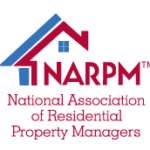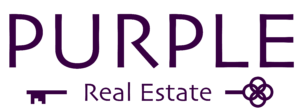The Podcast Transcript:
Hi, I’m Joe White. This is the Grow Real Estate Podcast.
Today I am going to look into the real estate investing strategy of being a Private Lender.
From the borrower’s perspective, private lending is a method that investors can use to raise fast capital.
Many buyers look to fund the purchase of rental properties, or to fund the renovation.
It’s a way for the investor, who may have his wealth tied up in other assets, to access immediate cash so he can capitalize on another opportunity.
It also offers a borrower certain savings on taxes and many of the costly real estate fees investors face without private lending.
But private lending offers several distinct advantages for the lender as well and it's a chosen investing strategy by many investors.
For one, it’s an opportunity for investors who may not yet have enough money to purchase an investment property, to gain needed capital and real estate investing experience quickly.
It's also a much more passive type of investing.
Let’s look a little further at what private lending is, and why it’s a great opportunity for lenders to bring in a safe and dependable return on their investment.
When you loan money privately, you have an agreement that specifies how much you’ll be paid and when you will be paid.
This delivers predictable returns provided the right lender and borrower are paired together. For the lender, it can mean a monthly paycheck that is as dependable as clockwork.
The most common form of Private Lending is to offer a short-term loan where the lender gives the borrower a bridge loan until a more permanent source of financing is put into place, or the property is sold for a profit.
For example: a real estate investor may be looking to rehab a rental property that they already own and needs the capital to renovate it.
Once the rehab is completed, they can then refinance it with a bank for the new enhanced value and easily pay off the initial private lending loan they owe.
Or they could sell the property. In either scenario, the lender would likely have a lien against the property blocking these unless the lien is 1st satisfied and they get paid. Title companies can set up these liens for a small fee.
This is a very common form of private lending, as there is a very low risk threshold for the lender, especially compared to other forms of investing - remember the loan is typically secured by the property which is a very stable asset.
Private lending also tends to have a quick Velocity of Money dynamic - meaning it brings very quick returns. A private lender gets their investment & the return on that investment once the property is renovated or sold.
Private lending has high returns, it tends to be low risk, the returns tend to come fast and tend to fairly high. Plus the returns tend to be extremely passive. Very low effort and time is money.
Because of this, private lending is favored by both experienced, and inexperienced investors alike. We see people at the beginning of their real estate careers doing it, to get the experience and to build their capital and this is also where many seasoned, successful investors endup.
Why? Because Private Lending Offers
- Predictable Returns
Placing money in the stock market is the equivalent of placing a bet on the future success of certain companies.
You’re hoping this bet will pay off in the long run; but stocks are not secured by an asset.
If the stock goes down; that was the gamble you took.
And virtually all stocks come in at a lower rates of return than does private lending. And certainly less predictably.
With private lending, you also don’t pay vendor fees. You aren’t paying a broker for the privilege of investing. You get 100% of the money you invest back, plus the return on the investment.
- You Also Get Portfolio Diversification
Private lending provides great diversification.
And each deal itself allows even further diversification.
Because as the market changes, the borrower’s needs will change as well …..and will self correct to meet whatever the current market is doing.
Private lending won’t dip in a down market. Instead it will simply self-adjust to it.
- Private Lending Offers Heavily Secured Investments
Private lending is unique as an investment in that it is nicely secured by the property; which is another way private lending differs from playing in the stock market.
For a small fee a title company sets up a lien against the property, that must be satisfied if the property changes hands. In theory the borrower could get a 2nd loan on the property; but that loan would be in 2nd position. Meaning, they get paid, only after you get paid.
Very few lenders will allow that, so they would require you to be paid off before lending their own monies.
You might have a fear of the possibility you might have to foreclose on the property in a worst-case-scenario. But, that isn’t as daunting of a maneuver as you might expect; nor is that very likely.
Remember, you aren’t taking someone’s property in this scenario, you are merely given control of it. You could require its sale, so that you can receive your proceeds; but in the case of an investment property, the borrower would likely sell the property to save themselves and pay what is owed.
Remember, this isn’t the home where the borrower lives….. and it should be worth far more than what they owe.
Likely the borrower’s worst-case scenario of having to sell the property, not only pays you what is owed, but probably also pays the borrower a profit.
- Build Rapid Capital
This is an investment strategy that allows an investor to rapidly build capital using the concept of velocity of money.
The capital increases gained from private lending could be quickly reinvested perhaps increasing future private lending returns.
If you loaned me $10,000 at 8 percent interest over a three-month window, you’d make $800 in that short amount of time. If you made that same investment four times throughout the year, you’d make $3,200 annually, by lending that same $10,000. For those keeping track, that’s a 32 percent return on your investment – a rate that’s nearly impossible to match on the stock market.
You can use the money to begin making real estate investments outside of private lending, like purchasing rental property. It can be used to speed up the development of your investment portfolio, it could dependably fund your retirement plans, or could be a creative means to fund expenditures such as vacations. The beauty of real estate investing is that we aren’t reinventing the wheel.
Very few things that I speak about in these podcasts, or in the supporting article guides, are from my own real estate investing genius. They are all accepted, well exercised concepts that have been around for thousands of years.
And Private lending is the oldest, most proven form of investing. Anyone who has been paid interest on their loan can attest to this.
You can even Hack This Process
Your Self-Directed 401K allow you to invest your own money and it’s a great way to supersize your retirement investment.
Your high returns through private lending could fund more private lending deals, or go straight into the 401K to keep the dependable returns coming.
All this can be accomplished while deferring the taxes on your returns.
Tax avoidance & private lending are two investment vehicles work beautifully in tandem.
This is a good point for me to do some much needed housecleaning:
As always, with all my podcasts it's best to talk with a tax accountant, attorney, or financial advisor to see what works best for your portfolio. I’m not any of those things. I am a real estate broker; but I’m not your real estate broker.
Okay What You Need to Know from the Borrower Before You Agree to Lend them your $?
You do need to find the right borrower and you need to find out some crucial information from them 1st.
Here are some key pieces to know before you agree to a deal.
- What’s the Borrowers exit strategy?
If the borrower’s investment goes bad, the exit strategy is how you’ll recover your money.
The exit strategy will likely include the borrower selling the investment property, or refunding the money from another revenue source.
- What kind of history does the borrower have?Ask what kind of lending they’ve done in the past. Would big banks give them money? If the borrower starts exaggerating their position, or puffing their chest, it may be a red flag, and time to pay more attention to the deal.
- Understand the ValueIt’s critical to understand the value of the borrower’s property, and what they are trying to accomplish with your loan. How much is the property currently worth? How much will the cost of the renovation be? How much will it be worth once done? The less you trust the borrowers experience, the more you will need to know these values yourself.
The 1st rule of investing, no matter what the investment, is that you 1st must know value.
Okay, that brings us to the end of our podcast - Hopefully you can now decide if private lending is, or isn’t right for your investing portfolio and your financial goals. It has high returns, its extremely passive and has low financial risk, making it one of the most attractive forms of investing that is available.
On that note I’m Joe White. This is the Grow Real Estate Investing Podcast.
Happy Investing!






